We’ve come a long way from the days when we were actually a customer-first company.
We used to offer phone support to all of our users (none of whom were paying us at the time).
We were super-small then, and I would actually be the one answering the line: “Yotpo Support, how can I help you?” I didn’t dare say my name for fear someone would look me up on LinkedIn and see that the “Head of Support” was actually the CEO.
Back when we were just 10 people, with a couple of hundred clients, we had something called the “Yotpo Fire Department.”
Every time the number of tickets got above 100, all the developers dropped what they were doing and started answering tickets.
When we were 20 people, 7 of those employees were client-facing.
And it worked because we started to grow fast. But then things changed.
We focused on growth and innovation instead of on our clients.
We began to make product decisions based on innovation, instead of customer needs.
Our marketing focused on our successes instead of the success of our users. We put HR resources into hiring developers and sales guys, instead of support agents.
And this showed in almost every metric: NPS, support-ticket response times, reviews we got.

Every indication from our customers showed the same thing: They loved our product, but they didn’t feel like they were getting the service they deserved. They were right.
We advocate for companies to tap into their biggest asset: their customers. But at the same time, we were letting ours down.
And that’s why our #1 commitment in 2017 is prioritizing customer love above all.
We want to be customer-centric (and not in the way that we just write it in our mission statement). That’s why I have challenged every team leader, Director and VP in the company to come up with the ways in which they will live out our official New Year’s Resolution: be awesome to our customers.
I wanted to share some of the best ones:
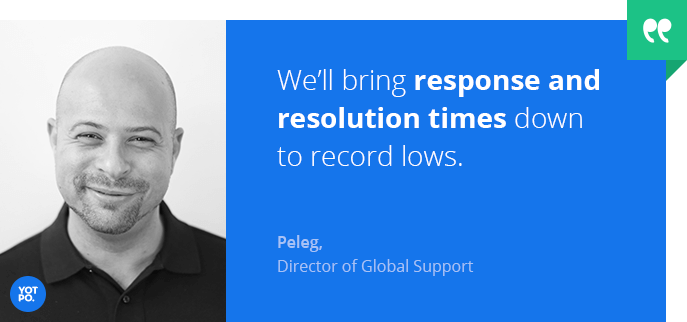
We’re doing everything we can to lower ticket response times and resolution times.
We’re increasing our headcount and also the amount of time our Support team is available. In Q4, we’ve already seen a 97% decrease in response time from Q3.
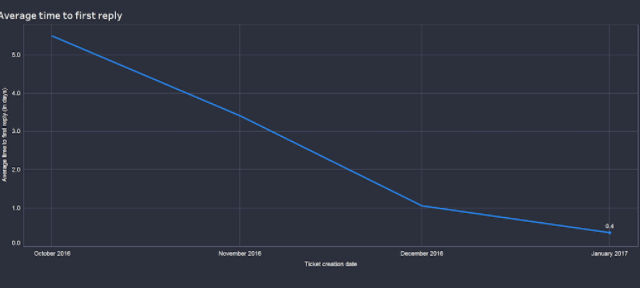
And a 48% decrease in resolution time.
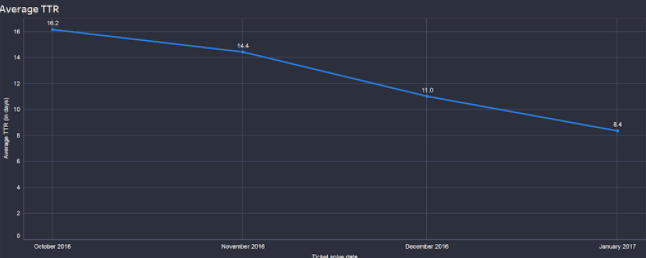
We will also focus on improving the quality of our service, making our Help Center easier to use and testing some new initiatives like live chat.
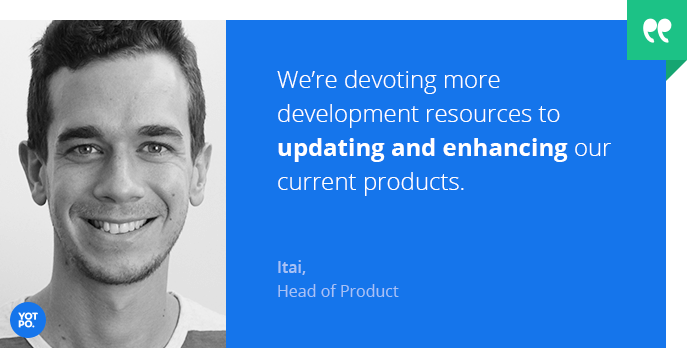
When it comes to trade offs in R&D resources, developments driven by current customers — such as feature enhancements — have taken a priority.
Below is the allocation of resources we had for Q4 of 2016 and what we have so far for Q1 in 2017. “Product Debt” refers to enhancing current features (usually according to specific user requests).
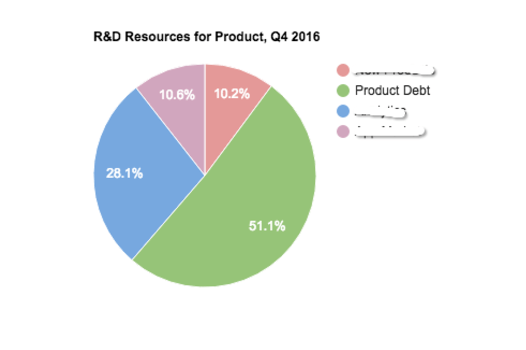
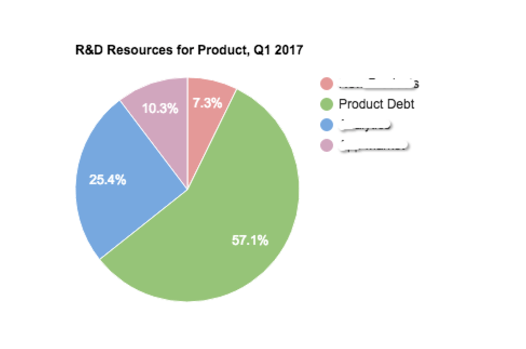
We hope to grow the allocation for enhancements as the year goes on.
There are also two more initiatives to help us be more customer-focused:
- Product Manager as a Client Success Manager.
The Product team knows our products better than anyone, but we can be pretty removed from customers.
That’s why this year, each Product Manager is taking on accounts as a Client Success Manager for the lifetime of the customer. This will help us understand integration, on-boarding and customers’ pains using the product.
- We’re building our own store!
We want to better understand the needs and challenges our clients have, so we are building our own eCommerce store. Stay tuned…
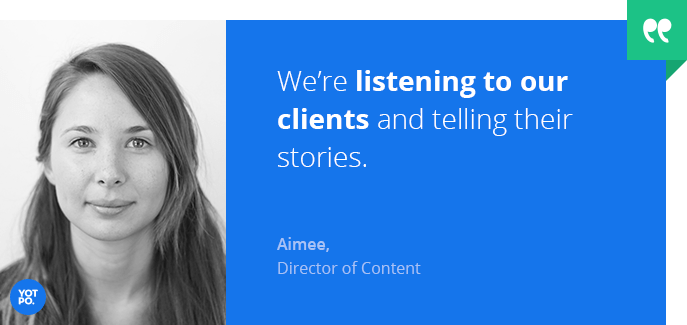
We were so focused on letting everyone know about us — our great new eBook, our awesome product release, our latest webinar — that we forgot what really makes us great: our customers.
This year, the Content team is going to change that.
We want to listen to customers more and also tell their stories.
First of all, we are listening to more client calls — whether its a recording of a Sales call or being in the room while Product is speaking beta users, we are going to be listening in.
Next, we are putting a ton of love into Social Proof, our Medium blog, which contains only first-person stories by real entrepreneurs.
We’re constantly scouting out users with amazing stories that they want to share.
Finally, we are ramping up our Success Stories — each one starts with a 30-60 minute call with a customer, so it’s a great way to get to know our users. We have learned amazing things from Success Stories in the past, so we are doubling down and trying to create 4x more than we did in 2016.

The Customer Lifecycle Team is responsible for ensuring clients love Yotpo enough to stay with us year after year. So, by nature, we’re already very customer-centric.
Still, there are a few things we are doing this year to be even more customer-focused.
One of them is working on sending clients regular ROI reporting so that they can easily see the value they’re getting out of Yotpo in a really transparent way.
We’re also using that data so we can help them more.
For example, if we see someone is using a feature but they can be doing more with it, we’ll be in touch to let them know how. It’s all about ensuring our customers know they’re getting what they paid for with Yotpo.
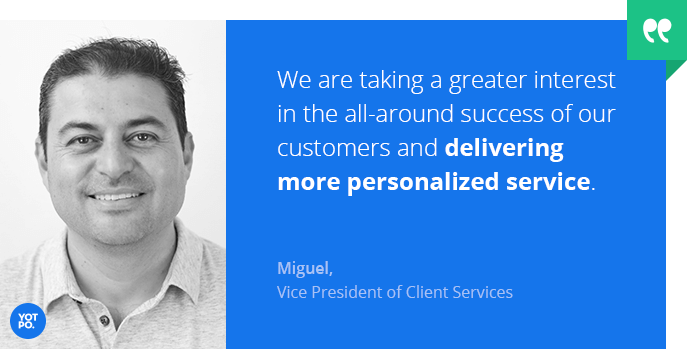
Besides the initiatives of other teams I oversee — like Support and Yotpo University — we are changing the structure of the Client Success team to deliver more effective and personalized service.
We’re segmenting customers into different, similar groups and having dedicated Client Success Managers (CSMs) working with each group.
This gives each CSM the opportunity to get to know each segment better and understand their clients’ competitive landscapes, allowing them to provide more personalized service.
We’re also upgrading our internal systems so we can be more proactive about customers’ needs; we’ll see when they have a problem that we can help them solve, and we’ll reach out.
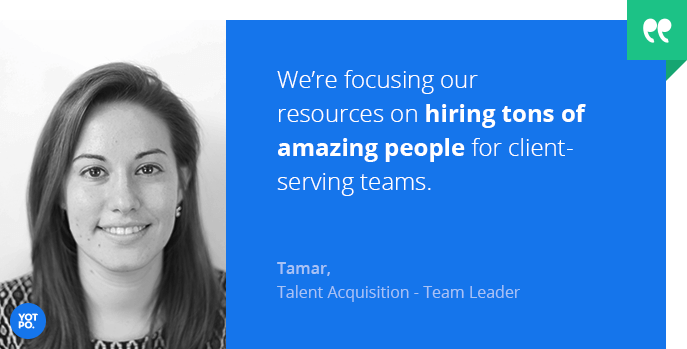
In the past, we put almost all of our HR resources on hiring tons of developers and salespeople, and now that’s going to change. In 2016 we tripled the size of our Support team and in 2017, we’ll quadruple it.
Client facing teams saw a huge headcount growth in the second half of 2016 (see the graph below) and we plan to continue this growth rate in 2017.
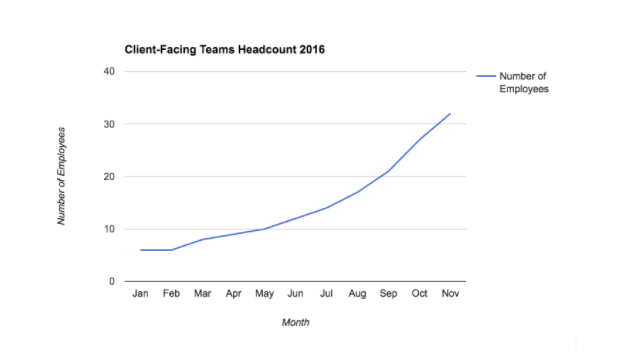
Those are just some of the resolutions, but hopefully it gives you an idea of the huge changes we are making here this year.
My personal resolution?
To ensure that every team sticks to these resolutions, embodies a customer-first mindset and that it is reflected in everything we do.
I hope you’ll notice the difference.
UPDATE: We were completely overwhelmed and grateful by the response to this post. Within 12 hours of posting, we had more than 50 blog comments and hundreds of emails — all with thoughtful and thorough feedback.
I took the last day to talk with the people here and think about how we want to respond to some of the things you brought up in your responses.
I’m working on responding back to many of you in the coming days to continue the discussion further. I wanted to address some of the main themes we noticed in the feedback from you:
1) Lack of transparency in pricing
We’ve chosen to leave pricing off of our website for a few reasons.
One of the biggest is that we never wanted anyone to not call us based on numbers they saw on our site.
We understand it may be difficult to take a leap of faith and sign with us for the long term, which is why we at least want the opportunity to speak with you all and truly understand if we can help in any way.
We never wanted someone to see the base prices and think, “This is not for me.”
We weren’t, however, aware of the bad will it created with you. We’re addressing this issue internally as we speak and hope to have something to show you ASAP.
2) Lack of options for small businesses
Small businesses are very near and dear to our hearts.
It’s why, despite multiple and constant reasons to do so, we have never gotten rid of our completely free plan and also why we are actively working to improve Support there.
If you read the post above, you know that I feel we lost sight of our businesses in general (not just small businesses). We’re working hard to change this.
We’ve made great strides in the past months to change this and are already seeing the benefits for our customers. This will only continue to improve as we move forward with 2017. More details to come on this.
3) Pricing in general
Pricing (of anything) should be directly correlated to value.
We’re working on restructuring our plans to ensure that value matches price and, most importantly, that our customers can actually SEE that value.



